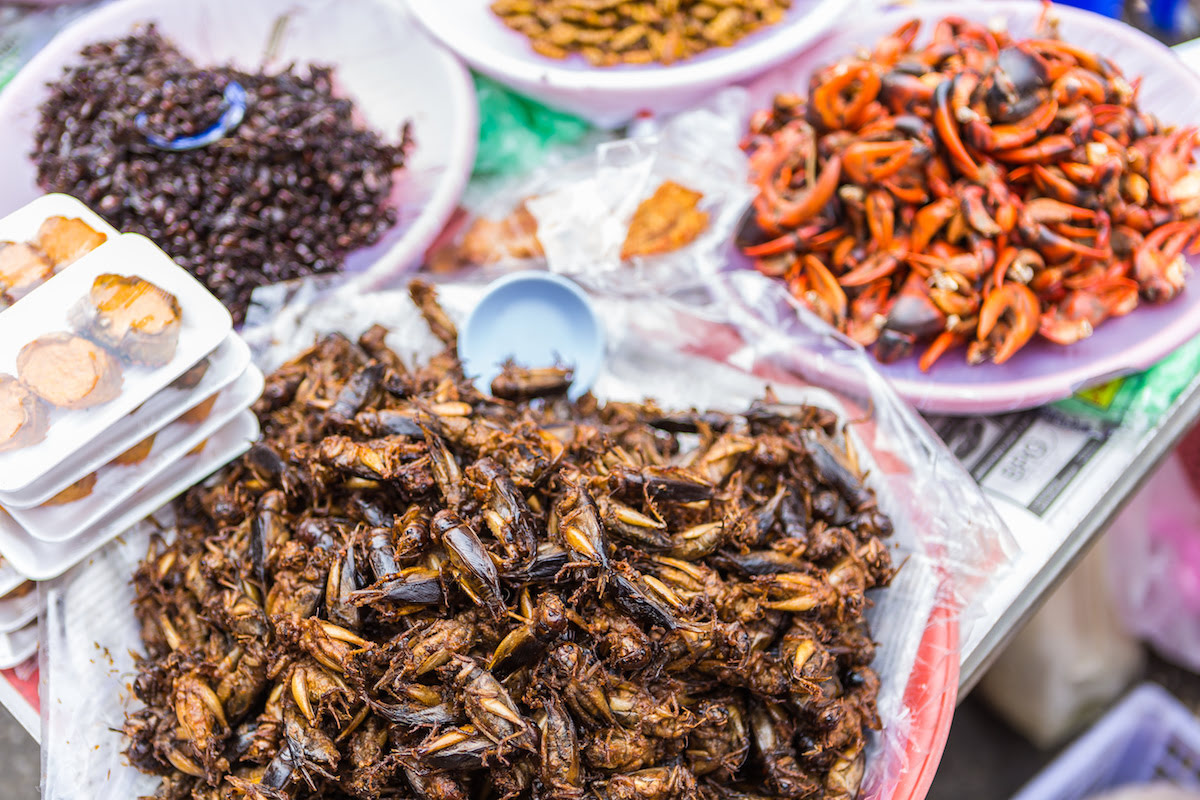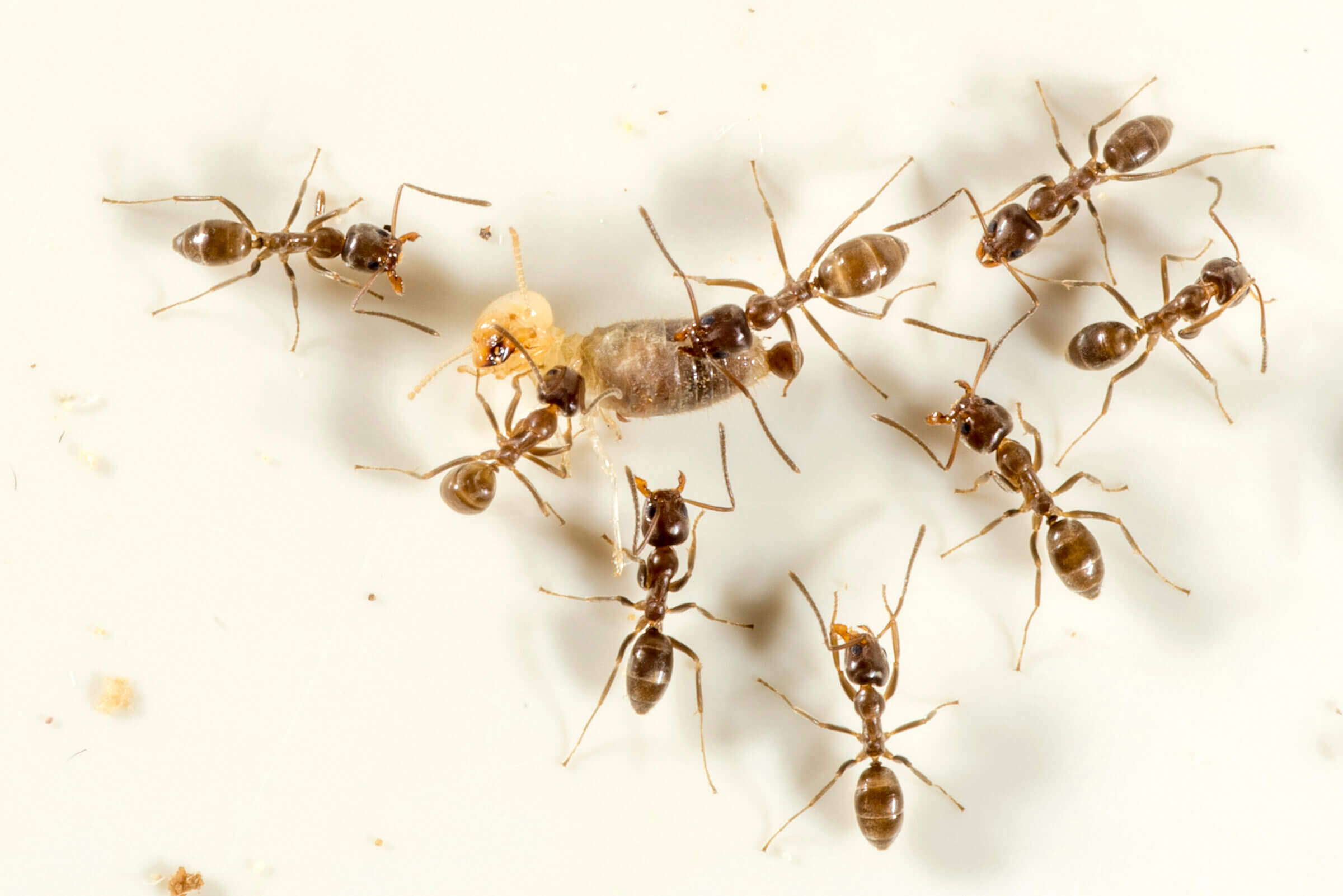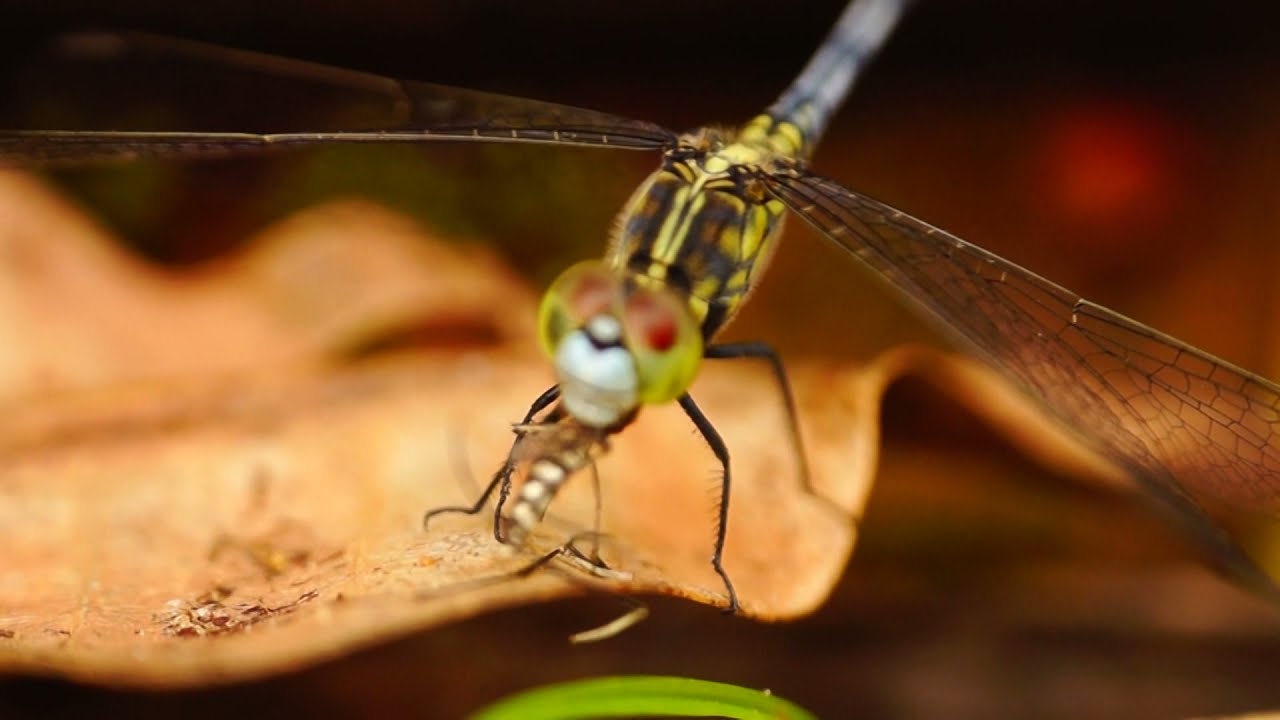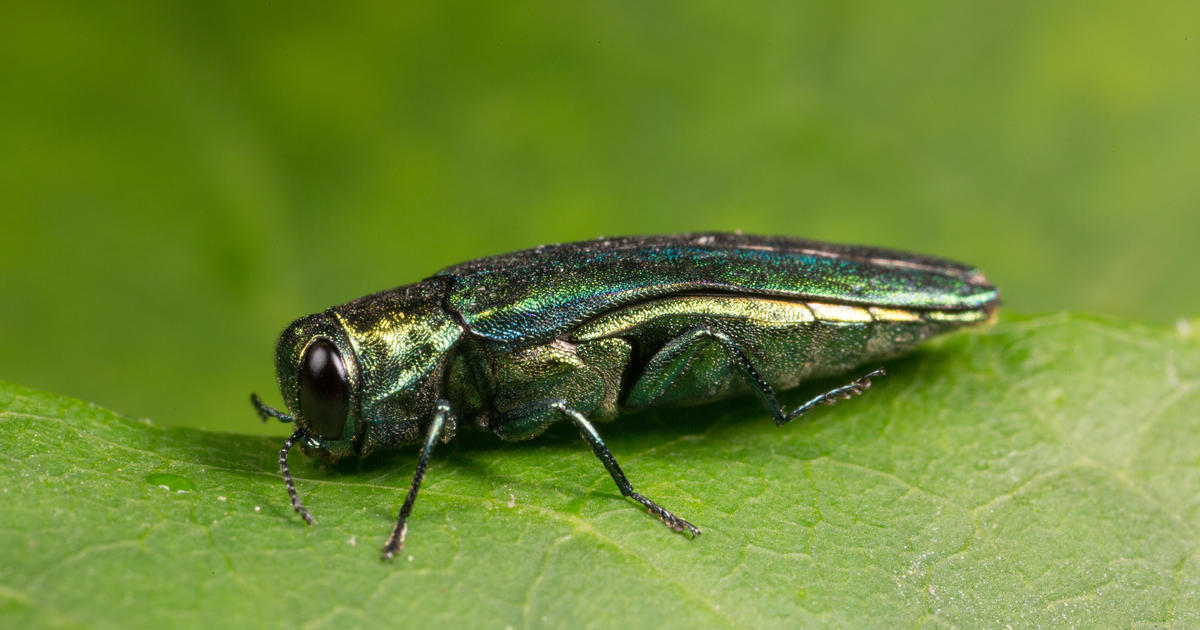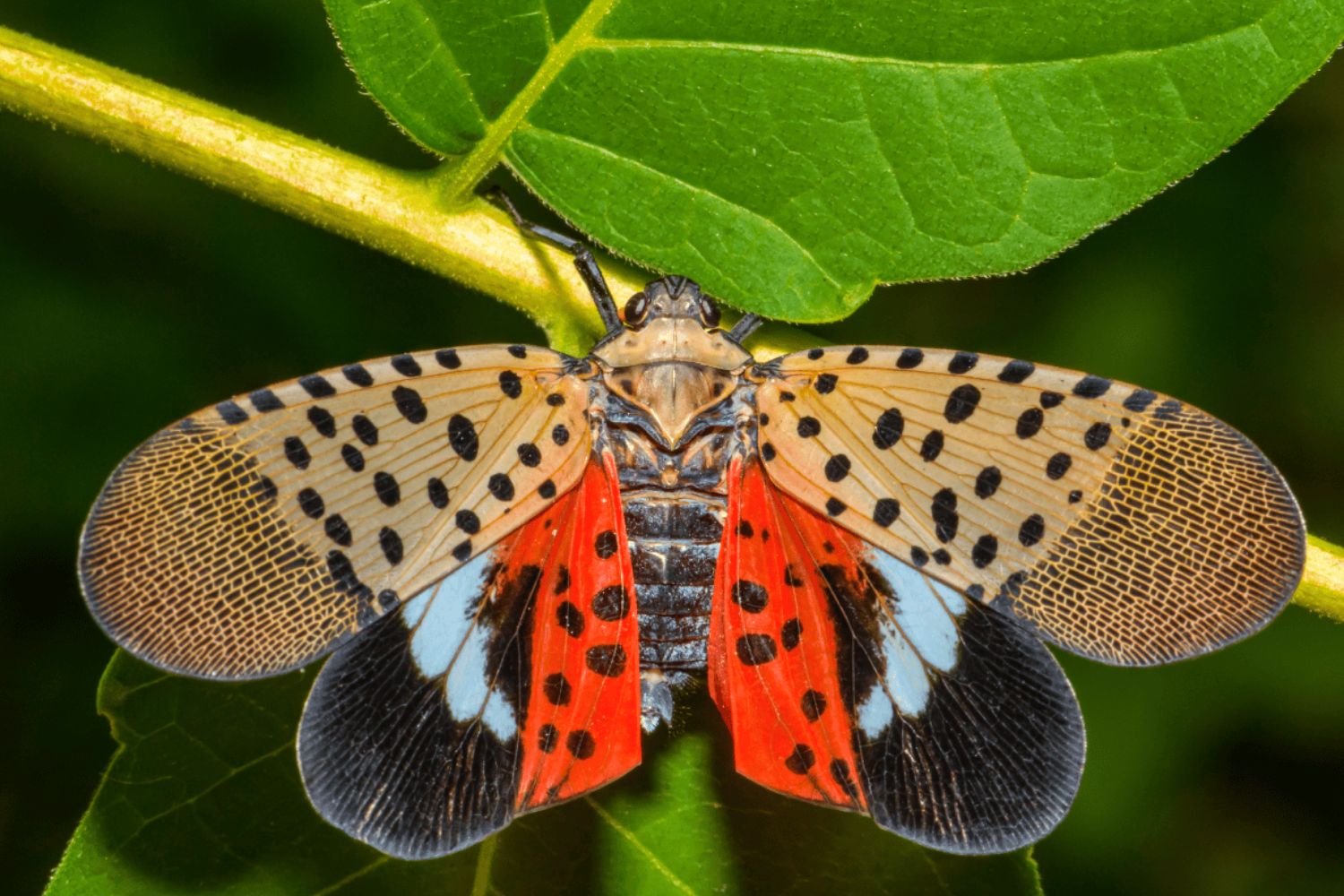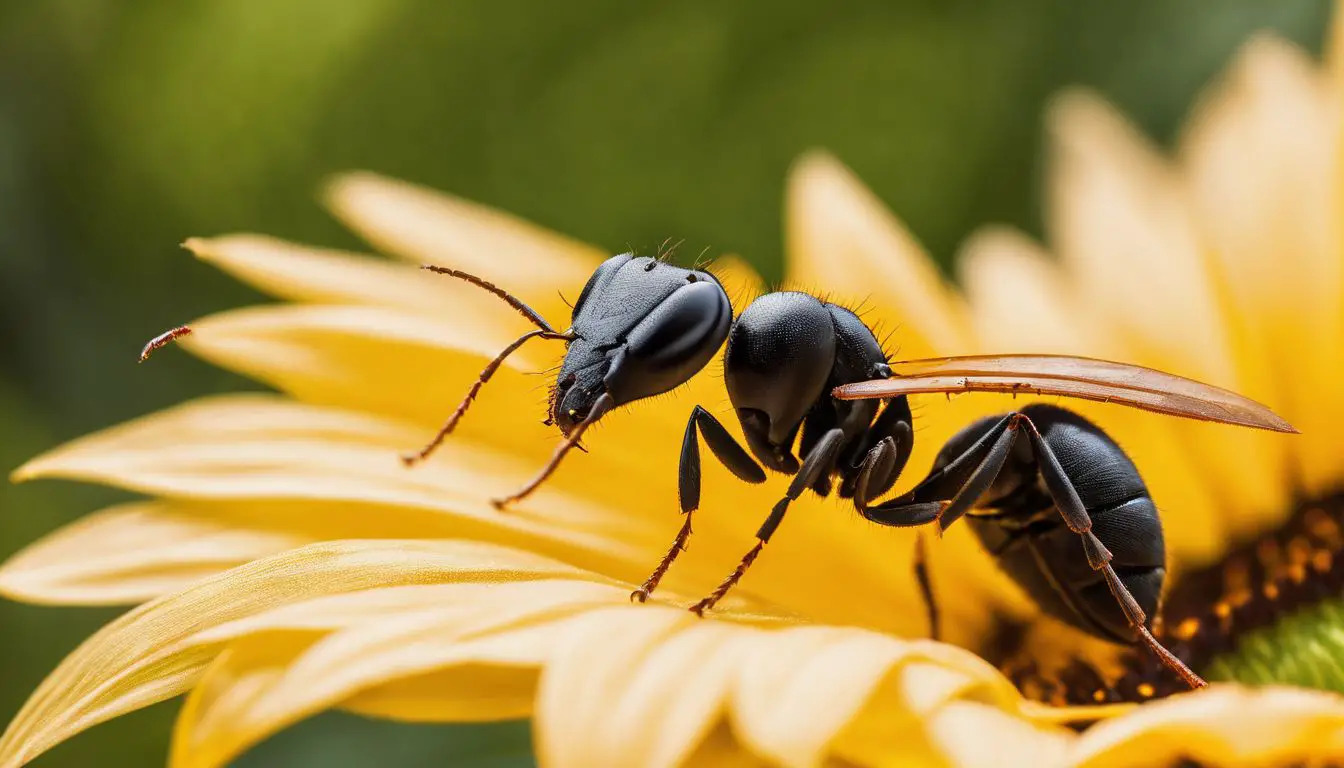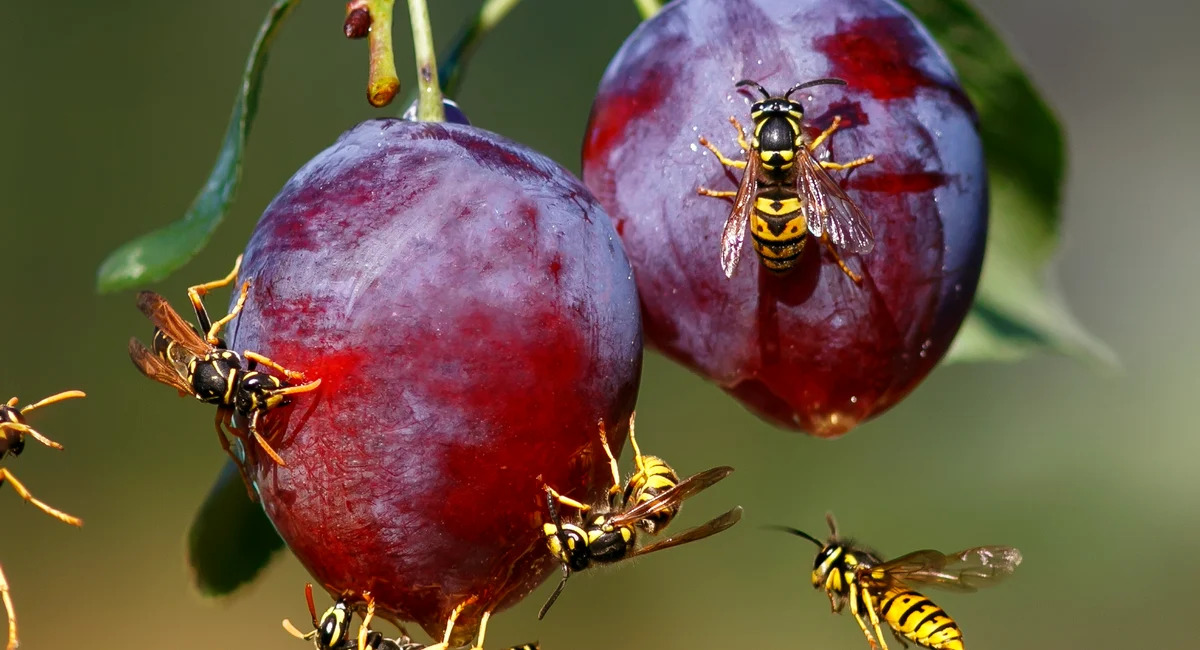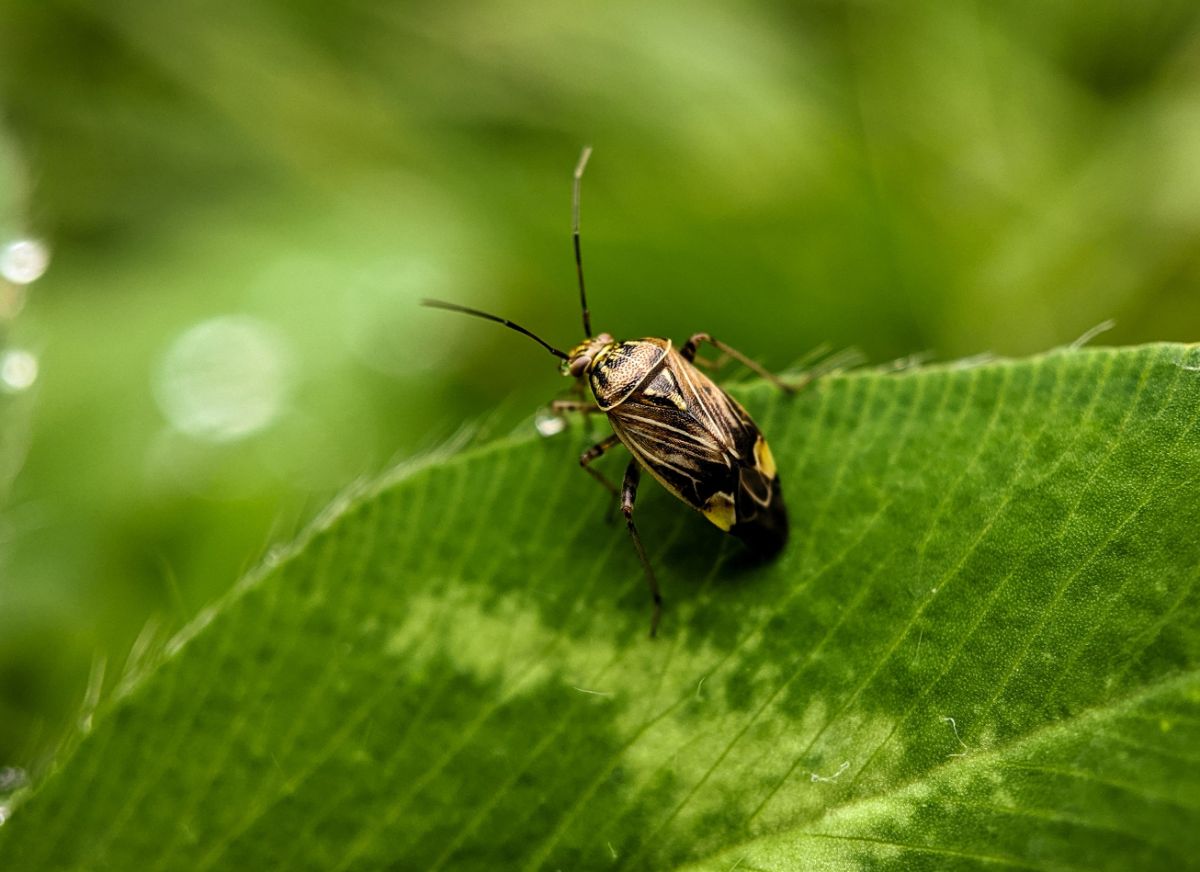Home>Gardening News and Trends>Latest News>What Insects Eat Cockroaches
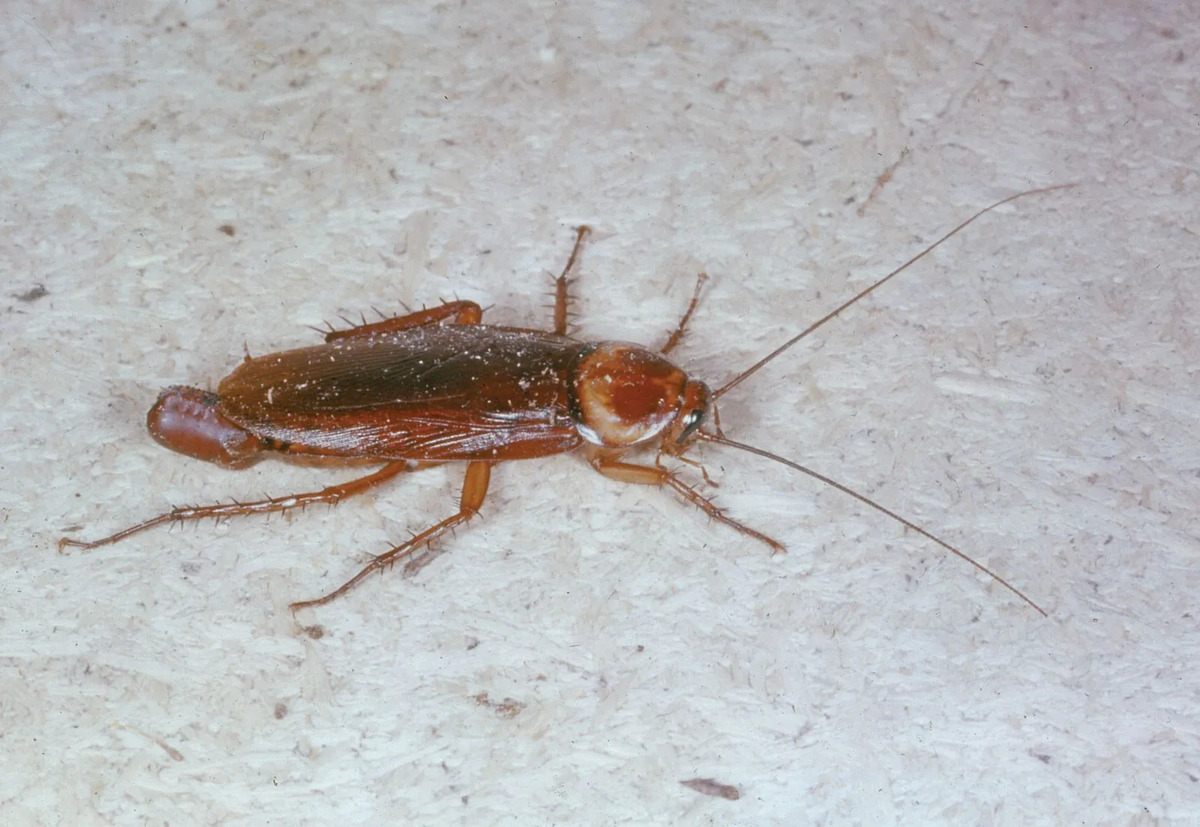

Latest News
What Insects Eat Cockroaches
Published: December 6, 2023
Stay updated with the Latest News on what insects eat cockroaches. Discover fascinating insights and find effective methods to control cockroach infestations.
(Many of the links in this article redirect to a specific reviewed product. Your purchase of these products through affiliate links helps to generate commission for Chicagolandgardening.com, at no extra cost. Learn more)
Table of Contents
Introduction
When it comes to pests that invade our homes, few are as notorious and resilient as cockroaches. These resilient creatures can infest our living spaces, contaminate our food, and spread diseases. Controlling their population is a constant battle for homeowners and pest control professionals alike.
While there are various methods to deal with cockroaches, one often overlooked but highly effective way is through the use of natural predators. Insects that feed on cockroaches can play a crucial role in reducing their numbers and keeping infestations under control.
Understanding the importance of studying insect predation of cockroaches is key to developing effective pest management strategies. By learning about the natural enemies of cockroaches and the techniques they employ to catch and consume their prey, we can capitalize on nature’s own pest control mechanisms.
This article aims to delve into the fascinating world of insect predation of cockroaches. We will explore the predatory insects commonly found in domestic settings and uncover the natural predators that exist in the wild. Additionally, we will investigate the strategies employed by these insects to effectively hunt, capture, and consume cockroaches.
By gaining insights into the role of insect predation, we can better understand the significance of these natural enemies in controlling cockroach populations. Whether you’re a homeowner dealing with a cockroach infestation or a curious individual with an interest in the natural world, this article will provide you with valuable information and a newfound appreciation for the intricate balance of nature.
Importance of studying insect predation
Studying insect predation of cockroaches is of utmost importance in developing effective pest management strategies. Understanding the natural enemies of cockroaches and their predatory behaviors can provide valuable insights into controlling cockroach infestations more efficiently and sustainably.
Firstly, studying insect predation helps us identify the most effective natural enemies of cockroaches. By mapping out the predators that target cockroaches, we can determine which species have the highest rates of success in controlling their population. This information allows us to focus on promoting and conserving these specific predator species, creating a balanced ecosystem that minimizes the need for chemical insecticides.
Furthermore, studying insect predation can lead to the discovery and development of biological control methods. By understanding how predators find, catch, and consume cockroaches, we can harness this knowledge to design innovative pest control techniques. For instance, if we observe that a particular predator relies heavily on scent cues to locate cockroach populations, we can develop scent-based traps to attract and capture the pests, creating a targeted and effective means of control.
Additionally, research on insect predation can contribute to the development of integrated pest management (IPM) strategies. IPM combines multiple approaches to control pests, including cultural practices, biological control, and minimal use of chemical pesticides. By incorporating the natural enemies of cockroaches into an IPM program, we can create a sustainable and long-term solution to manage cockroach infestations.
Moreover, understanding the dynamics of insect predation can shed light on the ecological relationships between cockroaches and their predators. It highlights the role of cockroaches in the food chain and the impact their presence or absence can have on the overall balance of the ecosystem. By recognizing the ecological value of predator-prey relationships, we can foster a greater appreciation for the importance of preserving biodiversity and protecting natural habitats.
Overall, studying insect predation of cockroaches is crucial for effective pest management and ecological preservation. By gaining insights into the natural enemies of cockroaches, their behaviors, and their interactions with the environment, we can develop innovative and sustainable methods to control cockroach populations. With this knowledge, we can minimize the use of harmful pesticides, create balanced ecosystems, and ensure healthier living environments for both humans and the natural world.
Predatory insects that eat cockroaches
When it comes to controlling cockroach populations, nature provides us with a helping hand through a variety of predatory insects that feed on these pests. These natural enemies play a vital role in reducing the numbers of cockroaches and keeping infestations in check. Let’s explore some of the most common predatory insects known to consume cockroaches.
1. Praying Mantises: Praying mantises are well-known for their predatory nature. These fascinating insects have an excellent ability to camouflage themselves and ambush unsuspecting prey. While they primarily feed on other insects, they do not hesitate to capture and devour cockroaches as well.
2. Centipedes: With their numerous legs and lightning-fast movements, centipedes are highly efficient predators of cockroaches. They subdue their prey by injecting venom, using their powerful jaws to immobilize and consume the cockroaches. Centipedes are particularly useful in areas with high cockroach activity.
3. Spiders: Spiders are skilled predators that spin intricate webs to catch their prey, including cockroaches. They employ venom to paralyze their victims, providing an easy meal for the spider. Common spider species like the huntsman spider and cellar spider are known to actively hunt down and eliminate cockroaches.
4. Beetles: Various beetle species have a taste for cockroaches and actively seek them out as a food source. For example, ground beetles are known to prey on small cockroaches that inhabit outdoor environments. These beetles are found in gardens and grassy areas where cockroach populations may thrive.
5. Antlions: Antlions are fascinating insects that build traps in loose sand to capture their prey. They create small cone-shaped pits, waiting at the bottom for their unsuspecting victims to slide down. While antlions primarily feed on ants, they will also consume cockroaches that wander into their traps.
6. Assassin Bugs: Assassin bugs are formidable predators with a stealthy approach. They use their long, piercing mouthparts to inject enzymes into their prey, liquefying the internal tissues for easy consumption. Assassin bugs are known to take down cockroaches, and their presence can help control infestations.
These are just a few examples of the many predatory insects that feed on cockroaches. Each of these natural enemies has adapted to hunt and consume cockroaches in their unique way, ensuring a constant check on cockroach populations in various environments. By harnessing the power of these insect predators, we can maintain a natural balance and effectively control cockroach infestations.
Insect predators found in domestic settings
Our homes provide a breeding ground for a variety of insect pests, including cockroaches. Fortunately, nature has equipped us with some insect predators that are commonly found in domestic settings. Understanding these natural enemies can help us utilize their predatory behavior to control cockroach populations effectively.
1. House Centipedes: House centipedes are nocturnal predators that thrive in dark and damp areas of our homes. While their appearance may be unsettling to some, they are incredibly beneficial allies in the battle against cockroaches. House centipedes have long, agile legs and use their exceptional speed to capture and devour cockroaches and other household pests.
2. Geckos: Geckos are small, nocturnal lizards commonly found in tropical and subtropical regions. They are excellent climbers and are often seen on walls, ceilings, and other surfaces in our homes. Geckos have a voracious appetite for insects, including cockroaches. Their ability to stick to surfaces with their specialized toe pads enables them to hunt and consume cockroaches effectively.
3. Ground Beetles: Several species of ground beetles are naturally present in our gardens and may also find their way into our homes. These beetles are robust predators known to feed on a wide range of pests, including cockroaches. Their flattened bodies and strong mandibles make them effective hunters, and they actively patrol the area in search of prey.
4. House Spiders: Common house spiders, such as cellar spiders and cobweb spiders, are skilled predators that weave intricate webs to trap and devour their prey. These spiders are often found in corners and secluded areas of our homes where cockroaches frequently seek shelter. House spiders play a crucial role in reducing the population of cockroaches by ensnaring them in their webs.
5. Ants: While ants themselves may be considered pests in certain situations, some ant species are known to prey on cockroaches. These predatory ants are often territorial and track down cockroaches to bring them back to their nests as a food source. By encouraging the presence of these predatory ants, we can help keep cockroach populations under control.
It is important to note that while these insect predators can contribute to cockroach control, they may not completely eliminate an infestation on their own. A combination of preventive measures, such as good sanitation practices and sealing potential entry points, along with the presence of these predators, can help achieve effective results.
By appreciating the role of these natural enemies, we can create a harmonious coexistence with the insect world in our homes. Instead of relying solely on chemical pesticides, we can encourage and promote the presence of these beneficial insect predators to naturally control cockroach populations and maintain a pest-free living environment.
Natural predators of cockroaches in the wild
Cockroaches are not only a nuisance in our homes but also a regular part of the diet for numerous natural predators in the wild. These predators play a crucial role in maintaining the balance of ecosystems and controlling cockroach populations in outdoor environments. Let’s explore some of the natural predators of cockroaches in the wild.
1. Birds: Many bird species include cockroaches as part of their diet. Insects make up a significant portion of their food source, and cockroaches are no exception. Birds such as sparrows, swallows, and starlings actively forage for cockroaches on the ground or in trees, using their beaks to catch and consume them.
2. Reptiles: Various reptiles, including lizards and snakes, prey on cockroaches. These cold-blooded creatures have the advantage of being able to hunt throughout the day and night. Lizards such as skinks and anoles are particularly fond of cockroaches and are known to consume them in large quantities.
3. Amphibians: Amphibians like frogs and toads can also be effective predators of cockroaches. Their sticky tongues can quickly snatch up crawling insects, including cockroaches. These amphibians are valuable allies in controlling cockroach populations, especially in wetland and marshy environments.
4. Arachnids: Apart from spiders found indoors, there are many arachnids in the wild that feed on cockroaches. Scorpions, for example, are nocturnal predators that use their powerful pincers and venomous stinger to capture and immobilize cockroaches. Whip spiders, commonly known as tailless whip scorpions, are also known to prey on cockroaches with their elongated front legs.
5. Insects: There are even insects that specialize in consuming cockroaches. For instance, certain species of wasps are known to have a symbiotic relationship with cockroaches, using them as hosts for their larvae. The wasp injects its eggs into the cockroach, and the hatched larvae consume the cockroach from the inside out.
6. Small Mammals: Some small mammals, such as rats and mice, are opportunistic predators that will feed on cockroaches if given the chance. While these mammals are not exclusive predators of cockroaches, their foraging behavior can contribute to reducing cockroach populations in their habitats.
Overall, these natural predators of cockroaches in the wild form an intricate web of predation that helps keep cockroach populations in check and prevents them from becoming overwhelming pests. Each predator has evolved specific adaptations to catch and consume cockroaches, contributing to the ecological balance and biodiversity of their respective environments.
Understanding the role of these natural predators highlights the importance of conserving natural habitats and preserving the delicate balance of ecosystems. By allowing these natural predators to thrive, we can harness the power of nature to naturally control cockroach populations in outdoor spaces while reducing our reliance on chemical interventions.
Strategies used by insects to hunt and consume cockroaches
Insects that prey on cockroaches have developed various strategies to effectively hunt, capture, and consume their target. These strategies are a testament to their adaptability and specialized techniques in tackling the resilient nature of cockroaches. Let’s explore some of the common strategies used by these insect predators.
1. Ambush Predation: Many predatory insects, such as praying mantises and assassin bugs, employ an ambush strategy. They camouflage themselves in their surroundings and remain perfectly still until a cockroach comes within striking distance. With lightning-fast reflexes, they seize the opportunity to capture their unsuspecting prey, using their sharp mouthparts or strong forelimbs to secure and immobilize the cockroach.
2. Pursuit Predation: Some insect predators, like centipedes and ground beetles, opt for a more active approach. They are relentless pursuers, using their rapid movements and agility to chase down cockroaches. These predators rely on both speed and superior maneuverability to catch cockroaches, often overwhelming them with their sheer persistence.
3. Entrapment: Certain insects employ specialized structures or mechanisms to physically entrap cockroaches. Antlions, for example, create conical pits in loose sand or soil, waiting at the bottom for unsuspecting cockroaches to slide down and become trapped. Similarly, some spiders construct intricate webs that act as highly effective snares for cockroaches. Once trapped, these predators move in to deliver the fatal blow.
4. Paralyzing Venom: Venomous insects, such as certain spiders and assassin bugs, utilize venom to paralyze their cockroach prey. They deliver a venomous bite or sting that immobilizes the cockroach, making it easier to subdue and consume. The venom often contains enzymes that begin the process of breaking down the internal tissues of the cockroach, allowing the predator to extract and consume the nutrients more efficiently.
5. Cooperative Hunting: In some cases, insects exhibit cooperative hunting behaviors to capture cockroaches. Certain species of hunting wasps, for instance, work together to subdue and transport paralyzed cockroaches to their nests. These wasps sting the cockroach to paralyze it before carrying it away, ensuring a ready food supply for their offspring.
6. Opportunistic Feeding: Some insect predators take advantage of the behavior and vulnerabilities of cockroaches to feed on them opportunistically. For instance, flies may lay their eggs on decomposing cockroach carcasses, allowing their larvae to consume the remains. This opportunistic feeding strategy helps to recycle nutrients and contributes to the overall decomposition process.
These strategies highlight the remarkable adaptations and specialized behaviors of insect predators that enable them to successfully hunt and consume cockroaches. Each predator has evolved over time to exploit the weaknesses and behaviors of their prey, allowing them to efficiently reduce cockroach populations in their respective habitats.
Understanding these strategies not only deepens our appreciation for the diversity and complexity of the natural world but also provides us with insights that can be harnessed for effective pest management. By recognizing and working with nature’s strategies, we can develop targeted and sustainable approaches to controlling cockroach infestations while minimizing the use of harmful chemical pesticides.
Role of insect predation in cockroach control
Insect predation plays a crucial role in controlling cockroach populations and managing infestations. Natural enemies, such as predatory insects, have evolved specialized adaptations and strategies to effectively hunt and consume cockroaches. Understanding the role of insect predation in cockroach control is essential for developing sustainable and environmentally-friendly pest management strategies.
One of the primary benefits of insect predation is its ability to provide biological control. Natural predators help regulate cockroach populations by actively preying on them. By reducing the number of cockroaches, these predators help prevent infestations from reaching unmanageable levels and potentially damaging our living spaces.
Insect predation is particularly important in environments where chemical pesticides may not be practical or desirable. In organic farming, for example, relying on insect predators as a form of natural pest control is preferred over using synthetic chemicals. By harnessing the power of natural enemies, farmers can effectively control cockroach populations without compromising the integrity of the ecosystem.
Additionally, insect predation can be integrated into a comprehensive pest management approach known as Integrated Pest Management (IPM). IPM combines various control methods, including cultural practices, habitat modification, and biological control, to manage pests effectively while minimizing the use of chemical pesticides. By incorporating insect predators as part of an IPM strategy, the reliance on chemical interventions can be reduced, creating a more sustainable and environmentally-friendly approach to controlling cockroaches.
Furthermore, insect predation can also help prevent the development of resistance in cockroaches. Cockroaches are known for their ability to adapt quickly to chemical pesticides, making control increasingly challenging over time. By utilizing insect predators alongside other control methods, we can create a more dynamic and diverse approach that limits the selection pressure on cockroaches, reducing the likelihood of resistance development.
Not only do insect predators aid in controlling the overall cockroach population, but they also act as an early warning system. Many predatory insects are sensitive to changes in their environment and can help signal the presence of a cockroach infestation. By monitoring the activity of these predators, homeowners and pest control professionals can detect cockroach problems early on and initiate appropriate control measures.
Overall, the role of insect predation in cockroach control is invaluable. Natural enemies not only contribute to reducing cockroach populations and preventing infestations but also provide a sustainable and environmentally-friendly alternative to chemical pesticides. By understanding and promoting the presence of these natural predators, we can strike a balance between effective pest management and ecological preservation.
Conclusion
Insect predation of cockroaches is a natural and effective means of controlling their populations and managing infestations. Understanding the various strategies employed by predatory insects and the role they play in cockroach control is crucial for developing sustainable and environmentally-friendly pest management strategies.
By studying insect predation, we can identify the natural enemies of cockroaches and capitalize on their predatory behaviors. This knowledge allows us to promote and conserve specific predator species that are highly effective in controlling cockroach populations. It also helps us develop targeted and innovative biological control methods, reducing our reliance on chemical pesticides and promoting a healthier living environment.
In domestic settings, insects such as house centipedes, geckos, and ground beetles contribute to cockroach control. Their presence can help keep cockroach populations in check, complementing other preventive measures such as good sanitation practices and sealing entry points. Appreciating the role of these natural enemies allows us to foster a harmonious coexistence with the insect world in our homes.
In the wild, numerous natural predators play a vital role in controlling cockroaches. Birds, reptiles, amphibians, and arachnids all contribute to reducing cockroach populations in outdoor environments. Preserving natural habitats and biodiversity is essential to maintaining these natural predators and ensuring the stability of ecosystems.
Insect predators employ various strategies such as ambush predation, pursuit predation, and venomous attacks to hunt and consume cockroaches. Understanding these strategies provides valuable insights for developing effective pest management approaches. By working with nature’s strategies, we can develop targeted and sustainable methods for controlling cockroach infestations while minimizing the use of harmful chemical pesticides.
The role of insect predation in cockroach control extends beyond population reduction. It also helps prevent the development of resistance in cockroaches and serves as an early warning system for infestations. By incorporating insect predators into integrated pest management (IPM) programs, we can achieve a comprehensive and environmentally-friendly approach to cockroach control.
In conclusion, insect predation plays a vital role in controlling cockroach populations and managing infestations. By understanding the strategies employed by insect predators and their importance in ecological balance, we can develop sustainable and effective approaches to pest management. Embracing this natural form of control allows us to create healthier living environments while minimizing our ecological impact.
